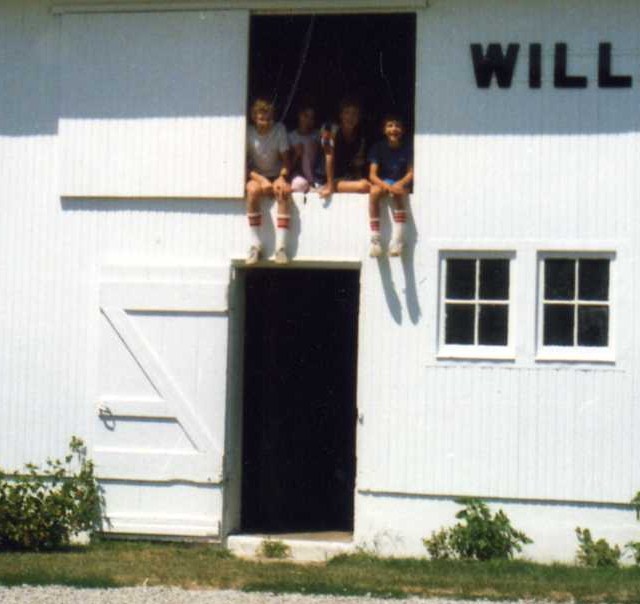
The Ribs of a Barn – by Pam Loxley Drake
Building a barn by Pam Loxley Drake
The barn. The big, beautiful barn. Most of my life my Dad’s name was on the side of the barn. I was never sure why since most people knew who lived there already. And, of course, I knew who lived there. I think maybe it was the pride in this wonderful barn. It was a groundbreaker.
The barn was built when my oldest sister was just a little girl, long before I came onto the scene. Monroe Riffel helped Dad build this new style of barn. It was the first of its kind in the area for this barn did not have pillars holding up the roof as did my grandfather’s. Nope. The rafters curved along the vaulted roof.
The history of Dad’s barn is the history of many barns in the area. Back then a sawmill was set up in the creek bottom. Dad and Monroe cut the trees and planed the wood. With his team of Belgian horses, Dad took the building materials to the site of the barn. There a foundation was poured and construction began.

As an adult, I am amazed at the practicality of this barn. Most ‘kids’ who played in that barn remember the big door over the front of the haymow. Yes, that was a place we sat to take in the view. In fact, the window looked directly at my bedroom window. Many a time I sat there in the barn with my feet hanging over the edge, looking out over the fields and neighborhood. I might see Doris Lavy sitting on her porch or Hollie Stager plowing a field. I could see the bridge and look over the creek bottom. Here life on Neff Road was captured in the frame of a door.
This barn was practical. On each end of the haymow was a door that lowered on pulleys. It was as if the top of the barn was being lowered. These doors allowed air to flow through the barn keeping the mow cool, keeping dampness at bay. My sister June thinks that maybe in the early days, hay and straw were blown into the barn through those doors. Bales were transported from the wagon bed to the haymow via an elevator. One man would stand on the wagon loading the bales onto the elevator, while two or three men moved them from the front window, stacking them along the sides of the loft. When the bales rose higher, the elevator was moved to the end of the barn where a higher window allowed the bales to come into the barn high enough to make stacking more efficient. What a barn! What a wonderful barn.
Once in awhile, someone would come to see this new marvel of a barn. It was a barn built for milk cows, and, in my opinion, a place for childhood memories. Yet over the years, my view of that barn across the yard changed. I learned that Dad had his new herd of milk cows destroyed when they contracted a disease. The dreams of a young couple were crushed; however, you can’t keep a farmer down. Dad raised beef cattle and sheep. The old milk parlor remained coated in dust and cobwebs. It was a reminder of the past. Yet the rest of the barn was full of life. The old white barn built from the lumber of the land became a symbol of survival. It was a place filled with the laughter of children and the sweat and determination of that family whose name was on the barn. It was always the view from my window.

Written by Pam Loxley Drake.
All credit is given to Pam Loxley Drake for this article. If share, please include her name as the author as well as credit to the AWTHS blog site. See our disclosure on web site page. Thank you.
